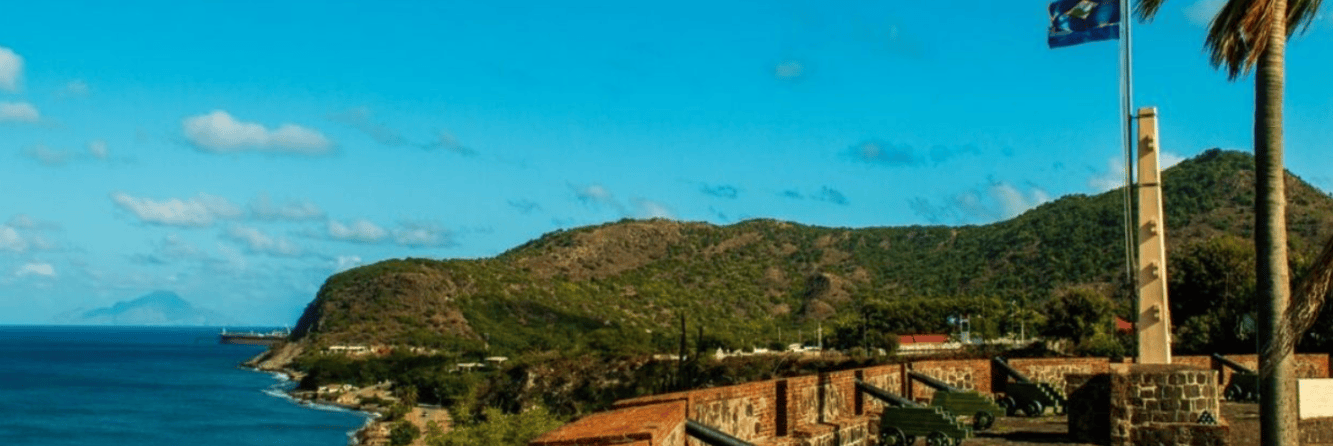2026 Day Trip Idea: 250 Years of Statia’s First Salute
Statian History as Freeport
While standing on a Dutch Side St. Maarten beach, two distinctive volcanic island silhouettes dominate the horizon. One, with its dual peaks resembling a saddle, is Statia or St. Eustatius (the other volcano being Saba).
Today, Statia is seen as a smaller Caribbean tourism destination, but in the 1700s, it served as one of the region’s most vital gateways for Atlantic-Caribbean trade. From 1756 onward, it operated as a free port, enabling commerce between competing colonial powers. The island’s many forts and ruins remain a major draw for history enthusiasts. Divers still search its bay for the legendary “blue beads,” while serious archaeological research continues at sites like the “triple wreck” to this day.
Statia’s role as a trading hub in the late 18th century also made it a crucial source of weapons and ammunition for American revolutionaries fighting the British. From the broader geopolitical lens, the Dutch, frequently at odds with British naval interests, used the free port to discreetly assist the American cause.
First Salute at Statia
It was no accident that the first foreign salute to the American flag occurred here on November 16, 1776. The salute honored the American brig Andrew Doria, which had arrived at St. Eustatius flying the newly created Grand Union Flag of the United States and seeking provisions and munitions.
As the vessel entered the harbor at Oranjestad, its captain, Isaiah Robinson, ordered a 13-gun salute. The Dutch fort above the bay—Fort Oranje—under the command of Governor Johannes de Graaff, responded with an 11-gun return salute. This marked the first official recognition by a foreign power (the Dutch) of a ship sailing under the American flag—an unofficial but symbolically powerful nod to American independence, just months after the Declaration was signed. The moment would come to hold great diplomatic and morale-boosting value during the Revolution.
Remembrance in 2026
The event has been commemorated over the centuries. On February 27, 1939, U.S. President Franklin Delano Roosevelt visited Statia as part of a Caribbean tour aboard the USS Houston, specifically to honor the historical salute. The island’s airport was later named in his memory, reinforcing the deep ties between this small island and the United States. Today, plaques in Fort Oranje commemorate Roosevelt’s visit, as well as those of other American dignitaries.
Barbara W. Tuchman, a Pulitzer Prize–winning American historian, titled one of her notable works after the event. The First Salute: A View of the American Revolution, published in 1988, examines the Revolution through both American and European lenses, with special focus on naval history and international diplomacy.
As 2026 marks both the 250th anniversary of the American Revolution and of the First Salute, the island and its pivotal role in history will take center stage throughout the year. If you’re interested in a themed day excursion from St. Maarten, consider taking a discounted Winair day trip flight to visit, departing from the St. Maarten Airport. From Franklin Delano Roosevelt Airport, it’s just a five-minute drive to Fort Oranje. You are prone to find new plaques recalling American independence and First Salute Day – at least as of November 16th. A great Thanksgiving day trip idea to be marked on your events calendar!
Back to VISIT St Maarten / St Martin Main Page
Back to VISIT St Maarten / St Martin Blog Page
General Information About St. Maarten / St. Martin Page

